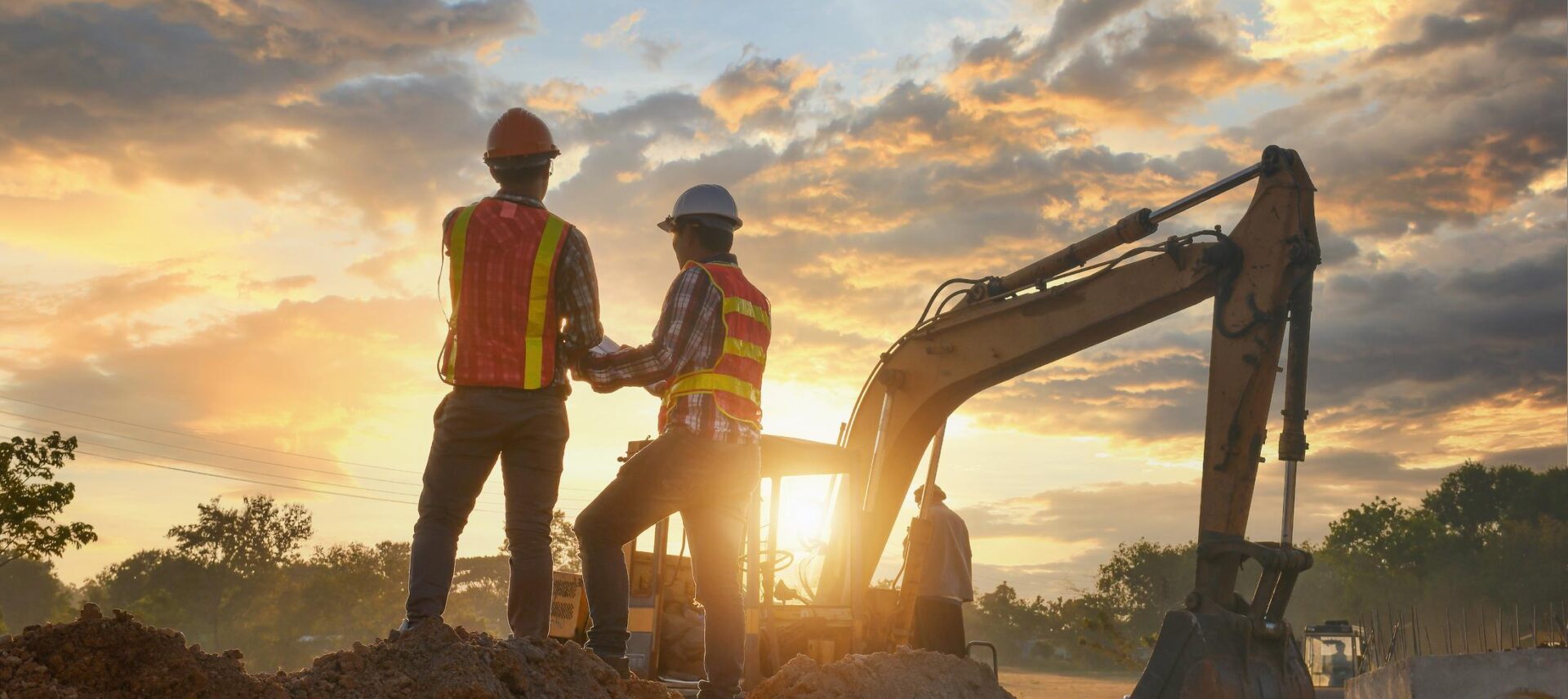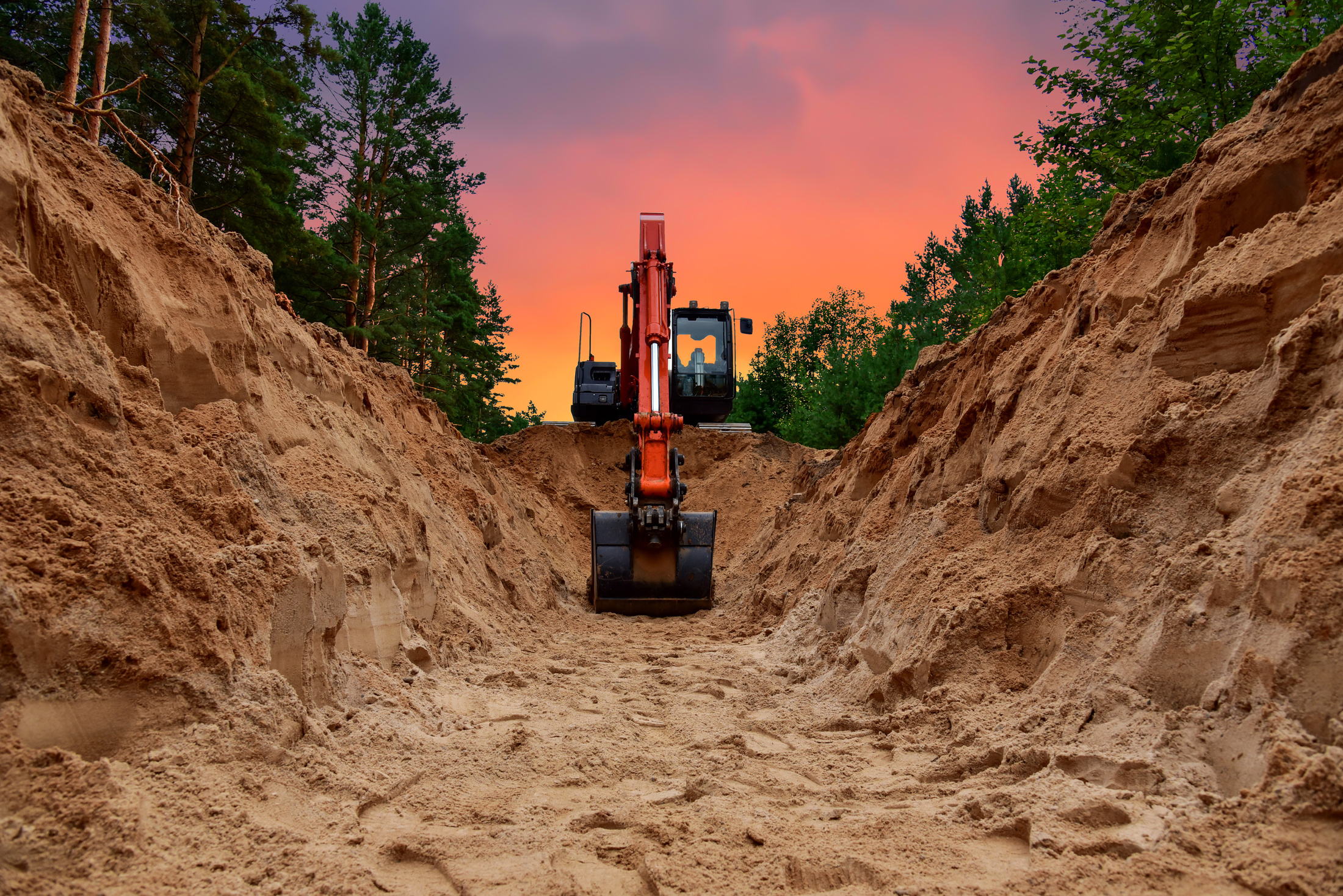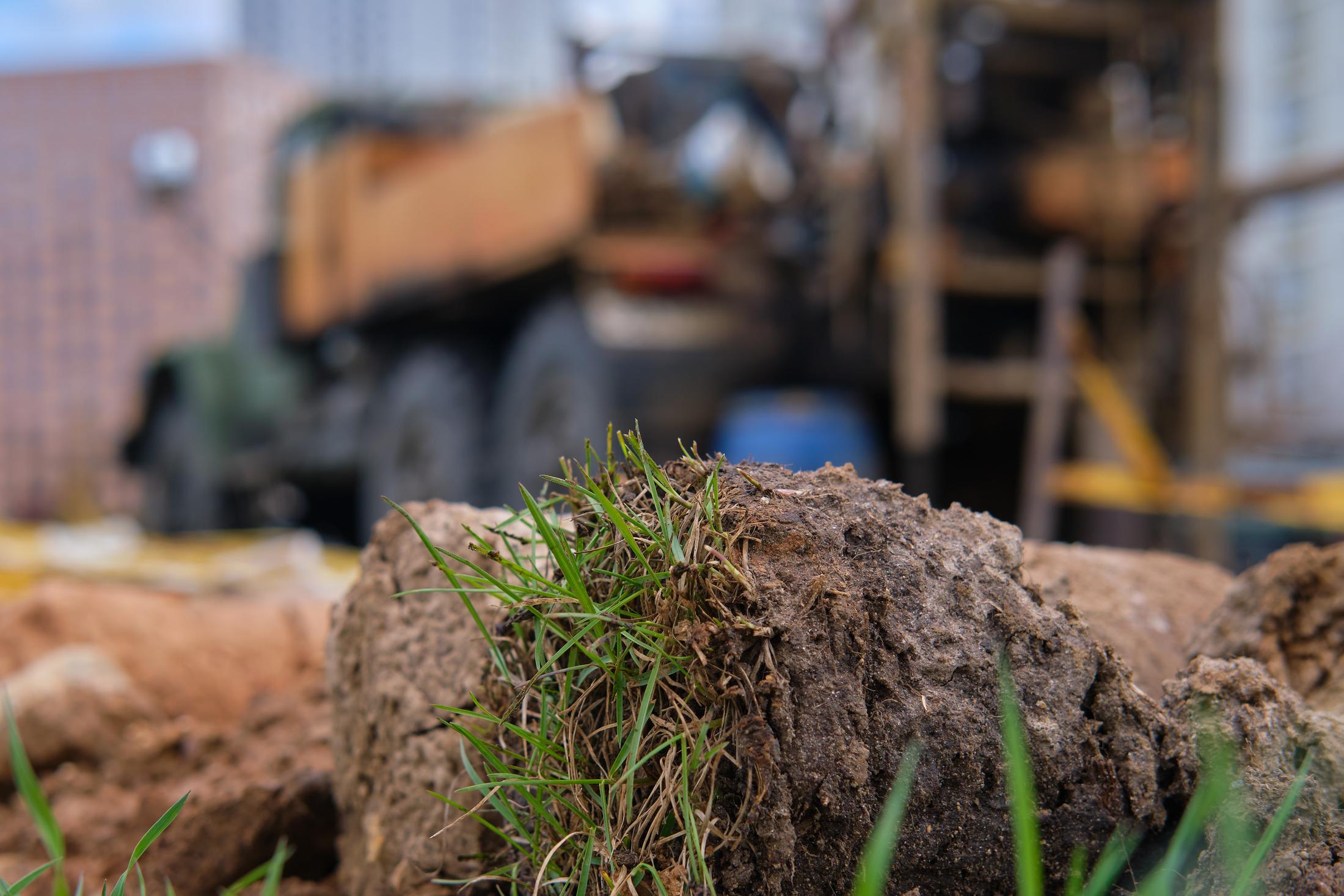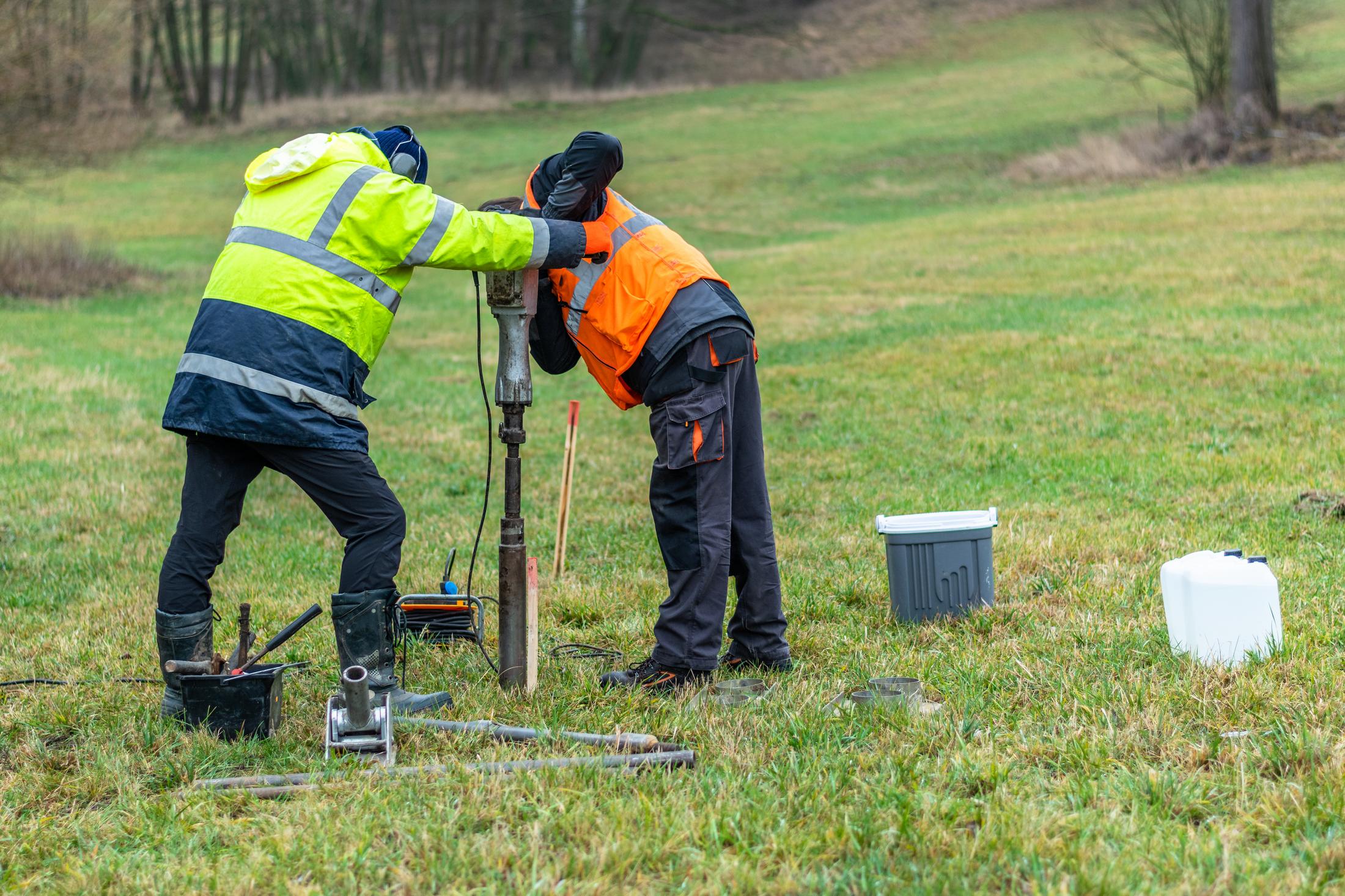News & Insights
What clients need to know about soil management to protect from unexpected change orders
This article explores the key parts of soil management in construction, showing how clients can protect their projects from unexpected costs and turn challenges into benefits.

Soil management is a critical, but often overlooked, aspect of planning. Before anything is built, clients need to know what’s in the ground to protect the project from unexpected change orders that can drive up the project costs.
This article shares how clients can guard themselves from unexpected soil issues, how to turn potential problems into benefits, and how to manage the costs. We’ll also discuss how expert engineers play a vital role in making sure the project is never blindsided by the unexpected.
How does soil composition impact the planning and execution of a construction project?
When beginning a construction project, there are two frameworks for looking at soil composition:
Geotechnical analysis focuses on assessing a soil’s suitability for supporting structures. It examines a soil’s bearing capacity for foundations, the stability of surface features like roads and walkways, and the integrity of underground utilities, ensuring that infrastructure like pipes and conduits are adequately supported.
Different types of soil, such as clay, rock, or hardpan, pose unique challenges for the construction bid. A site contractor must address these variations in soil composition to balance earthwork, avoid unnecessary removal, and determine the need to recycle or import material.
Geoenvironmental analysis evaluates the soil’s composition, identifying any contaminants such as volatile and semi-volatile organic compounds, per-and polyfluoroalkyl substances (PFAS), and petroleum, oils and lubricants (POLs), , etc. The findings determine the management of soil stockpiles. As long as thorough soil screenings document that the soil contamination is below the local, residential regulatory thresholds, soils may be responsibly reused onsite with low exposure potential to people, surface water, ground water, and critical infrastructure. Soil that tests above regulatory thresholds require disposal at approved disposal facilities.
When hazardous materials are present in the soil, the design engineers and earthwork contractor will incorporate additional safety and environmental measures, such as:
- Specialized stockpile containment. These coverings are used to contain contaminated soil, preventing the spread of hazardous materials.
- Construction vehicle wheel washes. These facilities reduce the risk of spreading contaminants offsite through vehicle movement.
- Dust control and air monitoring. This is essential to reduce spread of airborne particles and ensure the safety of the construction site by detecting and managing airborne contaminants.
- Onsite soil reuse. If contaminants are below specified levels, reusing materials onsite becomes feasible, leading to cost savings for the project, decreased construction traffic on local roads, and the potential to create an amenity when integrated into early planning stages.
- Worker personal protective equipment (PPE). Ensuring worker safety by providing protective gear to minimize exposure to harmful substances.

Understanding soil composition for construction success
Different soils have varied bearing capacities critical for stability. For instance, clay might offer a bearing capacity of 1,500 pounds per square foot (psf), while sand and gravel can provide up to 3,000 psf or higher. Identifying all soil layers within the project’s area of influence is key to achieving the desired bearing capacity and avoiding long-term settlement issues.
Addressing geotechnical challenges
Geotechnical challenges arise with certain soil types. Soil high in organics, silt, or clay can lead to differential or long-term settlement. Neglecting these factors can result in costly long-term impacts. And it isn’t just about the rigidity of structures: settlement of utilities demands intricate designs to maintain stability. This includes ensuring flexible utility connections to rigid structures to prevent shear forces.
Surprisingly, geotechnical boring to assess soil conditions for utility bearing is not always standard practice. This oversight becomes especially pertinent in complex construction scenarios, such as building on landfill sites.
Unanticipated geotechnical challenges, like encountering bedrock or highly silty soils, can lead to significant project delays and escalate costs unexpectedly. Such discoveries might not only halt construction temporarily but also demand additional permitting, particularly if the original plan involved reusing onsite soil. Finding that the soil is unsuitable can force the import of new material, adding layers of complexity, cost, and time to the project.
Geoenvironmental considerations and construction impact
In recent years, the construction industry has increasingly emphasized the geoenvironmental aspects of soil. Understanding the type and concentration of contaminants is crucial for determining the appropriate methods for handling, reusing, and disposing of soil materials. Addressing contaminated soil often involves complex procedures and significant costs, such as disposing of hazardous soil and importing clean replacements.
Common geoenvironmental challenges include:
- Asbestos in landfill projects. Teams frequently encounter asbestos in landfill sites, leading to significant project disruptions.
- Localized PCBs and VOCs. In sites with historical industrial use, contamination from polychlorinated biphenyls (PCBs) can extend well beyond the initial contamination zone, necessitating widespread cleanup efforts. Additionally, volatile organic compounds (VOCs) resulting from petroleum or diesel spills can bring construction to a halt and require extensive, costly remediation.
- Heavy metal contamination. Sites previously used for industrial purposes may have soil contaminated with heavy metals like lead, mercury, or arsenic. Managing these contaminants often involves soil remediation techniques or complete soil removal and replacement.
- Pesticide residues in agricultural lands. Former agricultural lands can contain pesticide residues that pose health risks and environmental concerns. Addressing these contaminants might involve soil treatment or specialized disposal methods.
- Hydrocarbon spills in former gas stations. Sites that previously housed gas stations or oil storage facilities are at risk of hydrocarbon contamination. Cleanup efforts may include soil excavation, treatment, or the implementation of in situ remediation techniques.
If the geoenvironmental assessment reveals these challenges, there will be environmental impact costs. Practices like construction vehicle limits, vehicle wash stations, dry soil management, onsite soil remediation, and the use of worker personal protective equipment (PPE) will maintain environmental compliance and ensure site safety; however, they can also extend project timelines.

Dealing with the soil that isn’t suitable for the project
Disposal of excess soil must adhere to legal standards. Often, recycling or processing the soil to make it geotechnically suitable is preferred so that it can be kept onsite. However, clients can also opt for virgin material from quarries, especially to avoid contaminants like rebar or glass from previous constructions.
Beneficial uses for removed soil
Removed soil, even if not geotechnically suitable for the original project, often has alternative applications either elsewhere on a project site or by selling the soil to someone else. Uses include:
- Stormwater management. Certain soil types can be effective in stormwater management systems, aiding in water infiltration, retention and detention.
- Landscaping. Organic, rich soil that is unsuitable for structural purposes can be an excellent resource for topsoil in landscaping, providing nutrients for plant growth.
- Clay utilization. While less versatile, clay can be used in specific applications like creating barriers in landfills or in certain types of landscaping projects. Additionally, clay can be amended with proportions of sand and rock to provide improved gravel roads with substantial longevity compared to sand and gravel alone.
- Erosion control and slope stabilization. Soil selection for steep slope applications is critical. If vegetation provides soil stabilization, topsoil with high-organic content is critical for long term stability, while sand and gravel would be typical for retaining wall, revetment or geotextile grids.
- Noise, visual and safety barriers. Mounds or berms of soil can be strategically placed to create barriers against noise, improve the aesthetics of an area, or protect sensitive areas from hazardous operations.
- Cover material for landfills. Soil is commonly used as cover material in landfills to encapsulate waste, control odor, and aid in the decomposition process.
- Aggregate for construction. In regions like the northeastern US, bedrock can be near the surface, requiring removal methods like blasting. Blasted rock can be crushed and used as aggregate in construction projects. This includes use in concrete, road base, asphalt, and other construction materials.
Dealing with contaminated soil
Managing contaminated soil on a construction site requires a multifaceted approach that considers environmental, legal, and community impacts.
- Identifying and assessing contamination. Thorough soil sampling, prompted by an initial assessment, will determine the type and extent of contamination. Upon discovering contamination, immediate notification of state authorities is essential to comply with regulatory requirements and initiate a response. The contaminated area is then carefully defined and excavated, and the soil is treated as hazardous material. This involves specific protocols for handling, treatment, and disposal to ensure safety and compliance.
- Interacting with the water table. The interaction between contaminated soil and the water table is an important consideration in the remediation process. It involves techniques that separate water from pollutants without spreading contamination. For long-term remediation, strategies like pump and treat systems or chemical/biological injections are employed, depending on the contamination’s nature and severity. These methods are designed to neutralize or contain the pollutants within the soil, mitigating environmental impact.
- Compliance and soil traceability. Adhering to regional regulations governing the transportation and disposal of contaminated soil is paramount, and a robust soil tracking system is essential for maintaining compliance. This system provides a documented chain of custody for the soil from its point of origin to its final disposal or treatment site. Such traceability not only helps in meeting legal requirements, but also in effectively managing environmental liabilities associated with contaminated soil.

How can a client minimize challenges?
A well-informed approach to soil management can pay dividends in both cost and schedule management. This approach goes beyond just managing direct construction costs; it also addresses potential delays and their broader impacts. Starting with a thorough understanding of the site’s soil conditions during the early stages of civil, site utility and structural engineering can significantly influence project success.
The key action steps are:
Due diligence prior to purchasing
Historical data, often readily available from federal or municipal agencies, can provide invaluable insights into potential soil issues. Before purchasing or leasing land, a client can run a title search to understand the site’s past use and potential for contamination. Red flags for contamination might be evident from previous uses such as landfills, automotive repairs, industrial activities, transportation hubs, or agricultural practices.
Geotechnical assessment
Conducting preliminary subsurface investigations, including strategic soil borings, is key to understanding the existing soil conditions. This assessment reveals important information such as the presence of bedrock and groundwater levels, which then informs decisions on soil reuse or disposal. The insights gained from this assessment are instrumental in setting the budget for earthwork and planning the project’s foundation and structural aspects.
Geoenvironmental assessment
Get a Phase 1 geoenvironmental assessment aimed at identifying potential environmental liabilities of a property. This step involves reviewing historical land use, regulatory records, and conducting a visual site inspection to identify signs of environmental contamination. It culminates in a report that outlines any detected risks and suggests if further investigation is needed.
A Phase 1 geoenvironmental assessment will reveal if a more comprehensive Phase 2 assessment is necessary, particularly for brownfield sites. The Phase 2 assessment, which includes analyzing soil, surface water, and groundwater, is crucial in understanding the extent of any environmental contamination and planning the appropriate remediation strategies.
Bid strategies for earthwork
Information saves money. Distinguishing between classified and unclassified earthwork in bid documents allows for more accurate and competitive bidding. This practice not only helps in cost management but also reduces risks associated with unforeseen soil conditions, thereby safeguarding the client’s interests.
How Salas O’Brien can help
Each construction project’s approach to soil management is tailored to its specific needs and site history. Whether dealing with standard soil issues or complex contamination cases, a thorough initial assessment and a strategic plan are essential for successful project execution. Salas O’Brien can help you manage your soil concerns as part of our civil and site utility engineering services. Reach out to one of our contributors below.
For media inquiries on this article, reach out to Stacy Lake, Director of Corporate Communications.

Scott Waitkus, PE
Scott Waitkus is an expert on carbon neutrality and energy efficiency with 35+ years of experience in the design and construction industry. The depth of Scott’s experience ranges from masterplans and utility tunnels for colleges and universities to renovations and new construction of healthcare, hospitality, and commercial projects. Scott serves as a principal at Salas O’Brien. Contact him at [email protected]

Jim Velleman, PE, LEED AP
Jim Velleman specializes in civil and site utility engineering for institutional and commercial clients with 25+ years of experience. He has a long history of helping clients transition to more sustainable practices and has a passion for how campuses evolve over time. As the civil/site utility engineer for decarbonization projects, he (and his team) are the bridge between building and site sustainable strategies. Jim serves as a Vice President at Salas O’Brien. Contact him at [email protected].

Jeff Longshore, PE
Jeff Longshore provided civil and environmental design for Space Launch Complex 41. Jeff leads teams of civil engineers and computer-aided designers. With the Merritt Island team since 2011, Jeff specializes in high-profile projects with challenging parameters. He has a Bachelor of Science in Civil Engineering from the University of Central Florida. Contact him at [email protected].